| Recent Featured Videos and Articles | Eastern “Orthodoxy” Refuted | How To Avoid Sin | The Antichrist Identified! | What Fake Christians Get Wrong About Ephesians | Why So Many Can't Believe | “Magicians” Prove A Spiritual World Exists | Amazing Evidence For God | News Links |
| Vatican II “Catholic” Church Exposed | Steps To Convert | Outside The Church There Is No Salvation | E-Exchanges | The Holy Rosary | Padre Pio | Traditional Catholic Issues And Groups | Help Save Souls: Donate |  |

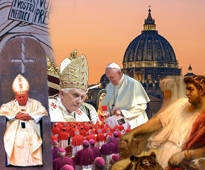
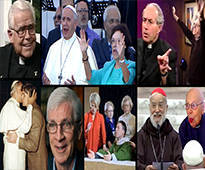
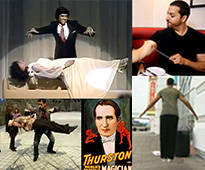
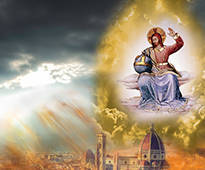

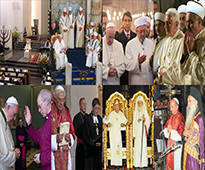


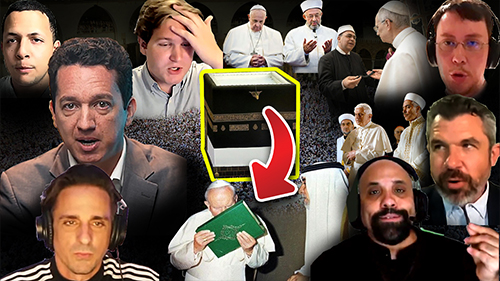 " />
" /> " />
" /> " />
" /> " />
" /> " />
" />




The Bible Teaches that Jesus made St. Peter the First Pope
The Bible Proves The Papacy (video)
This is a must-see video. It’s one of the most important videos we have produced. Among other things, it covers a new biblical proof of the Papacy that is of great significance.
Did St. Paul Really Rebuke St. Peter In Galatians 2? (video)
Clement and Ignatius - The Early Church recognized the Bishop of Rome as the successor to St. Peter's authority - Section A of Part 2 [14 min. audio]
This section moves into the evidence that the Bishop of Rome/the Church of Rome was recognized as supreme in the primitive Christian Church (precisely because it inherited the authority of St. Peter). This section covers the famous epistle of Clement of Rome to the Corinthians (A.D. 90-100) and the famous epistle of Ignatius of Antioch to the Romans (circa A.D. 110). Learn what you probably didn’t know about these most famous documents of early Christianity. These documents are some of the most important in the history of Christianity and they are regarded with great respect by essentially all students and scholars of the early Church, regardless of denomination. Learn how they demonstrate Catholic teaching on the Papacy. Hear the very interesting admissions about these documents from an Eastern “Orthodox” scholar, and how such admissions serve to refute the Protestant and Eastern “Orthodox” position. (Section C of Part 2 will be posted in the future.)
Hermas, Victor, Irenaeus and Cyprian - The Early Church recognized the Bishop of Rome as the successor to St. Peter's authority - Section B of Part 2 [15 min. audio]
This section covers the evidence for the Papacy from the second and third centuries. It covers Hermas, Anicetus and Victor in the Easter Controversy, Irenaeus, Cyprian and the rebaptism controversy. It shows how, at this early stage of the primitive Christian Church, the supreme authority of the Bishop of Rome was recognized. The primitive Christian Church recognized the unique authority and primacy of the Bishop of Rome because he held the universal jurisdiction which was given by Jesus Christ to St. Peter.
Nicea, Sardica, Athanasius, Damasus, Emperors - The Early Church recognized the Bishop of Rome as the successor to St. Peter's authority - Section C of Part 2 [15 min. audio]
This section finishes up the evidence for the primacy of the Roman Pontiff in the third century and moves into the fourth. It covers the case of Paul of Samosata; the Councils of Nicea and Sardica; Athanasius and Julius; the Emperors Gratian and Theodosius; and Pope Damasus.
Constantinople, Ephesus, Chalcedon - The Early Church recognized the Bishop of Rome as the successor to St. Peter's authority - Section D of Part 2 [new 22 min. audio]
This section covers the evidence for the primacy of the Roman Pontiff at the second, third and fourth ecumenical councils (Constantinople, Ephesus and Chalcedon). It also covers St. Jerome. This evidence from the councils is especially important because the “Eastern Orthodox” and many Protestants accept the first seven ecumenical councils. This section also responds to objections from certain canons of Constantinople and Chalcedon. These objections are frequently raised by critics of Catholic teaching. The section ends with more evidence from the early Church historians Socrates and Sozomen.
JESUS GIVES THE KEYS OF THE KINGDOM TO PETER IN MATTHEW 16
Matthew 16:18-19- “And I say also unto thee, That thou art Peter, and upon this rock I will build my church; and the gates of hell shall not prevail against it. And I will give unto thee the keys of the kingdom of heaven: and whatsoever thou shalt bind on earth shall be bound in heaven: and whatsoever thou shalt loose on earth shall be loosed in heaven.”
Jesus gives the keys of the Kingdom of Heaven to Peter, and declares that whatsoever he binds on earth shall be bound in Heaven, and whatsoever he looses upon earth shall be loosed in Heaven. Even though all 12 disciples are gathered together for this meeting, Jesus says these things only to St. Peter.
WHILE SPEAKING TO PETER, JESUS SAYS THAT HE WILL BUILD HIS CHURCH UPON THIS VERY ROCK
Jesus says: “thou art Peter and upon this rock I will build my Church.” The Greek word for “this” – as in this rock – is the demonstrative pronoun taute. It means “this very” rock or “this same” rock. Taute is used when "it is desired to call attention with special emphasis to a designated object, whether in the physical vicinity of the speaker or the literary context of the writer" (H. E. Dana and J.R. Mantey, A Manual Grammar of the Greek New Testament, 127). In the King James Version, taute is translated as “the same” in 1 Corinthians 7:20 and “this same” in 2 Corinthians 9:4.
Therefore, Jesus’ statement to Peter has this meaning: thou art Peter and upon THIS VERY ROCK I will build my Church. From the context given, “this rock” naturally refers to Peter. It just so happens that Jesus also changes his name from Simon to a name which means rock. (But we will see more on this point in a bit.)
THE CHANGE OF PETER’S NAME
Jesus changes his name from Simon to Peter, just before he declares: “and upon this rock I will build my Church.”
In the Old Testament a change of name denoted an appointment or a special calling or a change in status. In Genesis, we read the following about Abraham:
God changed his name from Abram to Abraham because the new name denoted his special role as a LEADER of God’s people. Abraham was chosen to be the father of many nations. (He was also called “rock,” as we will show.) In Hebrew Abram signifies a high father, but Abraham signifies the father of the multitude.
Likewise, in Genesis 32:28, we read that God changed Jacob’s name to Israel in order to signify his special role or position. Therefore, in addition to the other important things that Jesus says to St. Peter in Matthew 16, the change of his name from Simon to Peter serves to confirm St. Peter’s special position and his new status.
THE KEYS OF THE KINGDOM
No other apostle is given the keys of the Kingdom of Heaven. In Matthew 18:18, we read that all the Apostles are given the power to bind and to loose; but Peter alone is promised the keys of the Kingdom of Heaven in Matthew 16:19. This shows us that the power which is given to all the Apostles to bind and to loose in Matthew 18:18, must be exercised under the keys which are given alone to Peter. Peter has a unique position of authority in the Church.
THE “KEYS OF THE KINGDOM” REFERS TO ISAIAS 22 AND THE POSITION OF PRIME MINISTER
Here’s what’s really interesting. Most people don’t know that this reference to the keys of the Kingdom in Matthew 16:19 (and to Peter’s binding and loosing with them) comes from Isaias chapter 22. Jesus’ words to Peter in Matthew 16 are a reference to the function of the prime minister of the Kingdom in the Old Testament.
Notice that the language clearly parallels Matthew 16:19. In the Old Testament God established a covenant with David in order to establish a Kingdom. The Davidic Monarchy, the Kingdom of God on Earth, was meant to be a prototype of the Kingdom of God which Jesus Christ would establish. That’s why Jesus is called the son of David in the Gospels. It’s also why Matthew’s Gospel has kingdom as one of its primary themes. It’s also why Peter himself says in Acts 2:30 that Jesus sits upon David’s throne. Luke 1:32 says the following of Jesus: “He shall be great, and shall be called the Son of the most High; and the Lord God shall give unto him the throne of David his father…”
Jesus sits upon the throne of David. But Jesus’ Kingdom is a spiritual one; His Kingdom is His Church. Jesus’ Kingdom not only fulfills, but surpasses the prototype, David’s Kingdom. The point here is that Jesus’ Kingdom is set up along similar lines.
JESUS WAS CLEARLY MAKING ST. PETER HIS PRIME MINISTER
In David’s Kingdom there was not only a king who ruled all the people, but the king had a royal cabinet. The king had royal ministers or chief officers. You see references to this royal cabinet (these chief officers or royal ministers of the king) in 2 Samuel 8 (2 Kings 8 in the Douay-Rheims Catholic Bible). You also see a reference to them in 1 Kings 4 (3 Kings 4 in the Douay-Rheims) and in other places. In this royal cabinet, there was a minister of defense, ministers in commerce, provisions, etc.
However, of all the king’s ministers, there was one who stood out with authority above the rest. That was the prime minister, who was over the king’s house. That’s where the fascinating truth of Isaias 22 becomes relevant to Matthew 16.
In Isaias 22 we read that the prime minister HAD THE KEY to the house of David. Let me repeat that: the prime minister had the key to the house of David. This key represented the prime minister’s authority over the house of the king.
Notice that the prime minister had the key of the house of David. We also see that to him was committed “the government,” and that he would be “a father to the inhabitants of Jerusalem.”
In Isaias 22 the prime minister of the Kingdom was a man named Shebna. Isaias 22:15 says Shebna was “over the house” – that is, he was over the house of the king. Then Shebna left the office of prime minister and was replaced by a man named Eliakim. Then we read that the key of the Kingdom, which Shebna had, was given to Eliakim by King Hezekiah (the successor of David who was reigning as the king at the time). King Hezekiah gave the key of the Kingdom to Eliakim because Eliakim succeeded Shebna in the office of prime minister.
Eliakim now had the key to the house of David. By the fact that he had the key, everyone would recognize Eliakim as the king’s prime minister.
Think about the striking similarity to Matthew 16. In Isaias 22:22, we see the clear reference to the key of the Kingdom being passed, just as Jesus gives the keys to St. Peter. In addition, the statement that with the key “he shall open, and none shall shut; and he shall shut, and none shall open” is strikingly similar to what Jesus says to St. Peter in Matthew 16:19, when He gives him the keys to His kingdom: “whatsoever you bind on Earth shall be bound in Heaven, and whatsoever you loose upon earth shall be loosed also in Heaven.” The significance of this should be very obvious.
Jesus sits upon the throne of David. So when Jesus comes to establish His Kingdom (His Church), which is the fulfillment of the Kingdom of David, He likewise appoints His royal cabinet: His Apostles. But of those royal ministers (His Apostles), there is one prime minister who is over all the other ministers and all the members of the Kingdom. This prime minister is the one who will have the keys of His Kingdom and will be given the primacy in His Church to look after the affairs of His Kingdom.
When Jesus said to Peter, “I will give you the Keys of the Kingdom of Heaven,” it would have been a clear indication to all informed Jews that Jesus was going to make St. Peter His prime minister. He was declaring that St. Peter would be the first pope – the president or governor of His Church. This is a powerful and irrefutable proof that Jesus was indeed saying that St. Peter would be the first pope in Matthew 16:18-19.
WHO IS THE ROCK OF MATTHEW 16? IT’S PETER
It really should be obvious that Peter is the one whom Jesus is describing as the rock. But Protestants raise all kinds of objections on this point.
OBJECTION: PETER COULDN’T BE THE ROCK BECAUSE JESUS IS THE ONLY FOUNDATION
Those who raise this objection fail to realize that the Bible speaks of all the Apostles as foundations.
Is there a contradiction between Rev. 21:14 and 1 Cor. 3:11? No, of course not. The fact that Christ is the only foundation, as 1 Cor. 3:11 teaches, simply means that everything comes from Christ. All true authority in the Church must come from Christ because the Church itself comes from Christ. Anything outside of Christ is a false foundation.
Peter’s authority comes precisely from Jesus Christ, as Matthew 16 shows. It’s quite obvious, therefore, that if Jesus is the one who established these things in Peter, then what’s set up in Peter is not a foundation other than of Christ. It’s the very foundation of Christ.
So, the fact that Christ is the foundation or the cornerstone, as we read in Ephesians 2:20, does not mean that Christ Himself could not or did not establish one apostle to have a perpetual office which would be the rock upon which the Church would be built. The two concepts are not mutually exclusive. For example: Jesus is the Good Shepherd (John 10:14), but He also gives the responsibility of shepherding all His sheep to Peter, as we will see in John 21:15-17. Jesus is the one with the keys (Rev. 1:18; Rev. 3:7), but He gives His keys to Peter.
GOD CALLS ABRAHAM THE ROCK IN THE OLD TESTAMENT!
God is declared as the rock throughout the Old Testament and in Deuteronomy 32:4, but Abraham is also described as the rock in Isaias 51:1-2.
The Old Testament says look to the rock, look to Abraham. Abraham is described as the rock because he was the father of all the Israelites. Abraham’s name was changed from Abram to signify his role as rock and father of God’s people. Wouldn’t it be fitting, then, for Jesus to choose someone as the rock and father in the New Testament of the new Israel, the Church? Yes, and that’s why Simon’s name was changed to Petros, which means rock. In light of this evidence, it should be totally obvious to everyone that St. Peter is the rock. Nevertheless, let’s move to some other points.
WHAT ABOUT PETROS VS. PETRA IN THE GREEK?
Protestants argue that Jesus couldn’t have been saying that Peter was the Rock because of the differences in the Greek words. They point out that in the original Greek of Matthew 16:18, Peter’s name is petros, which means small stone, while the word to denote rock is petra, which means large rock. The Greek says: “Thou art Peter (petros) and upon this very rock (petra) I will build my Church.” But this argument is refuted by the following points.
First, the words petros and petra had the same meaning (rock) in the Greek which was used at the time of Christ. In some much earlier ancient Greek poetry, petros meant "small stone" and petra "large rock”; but that slight distinction had already disappeared by the time Matthew’s Gospel was written in Greek. (On this point, see the quote from Protestant D.A. Carson on page 39.)
The minor distinction between petros and petra only exists in Attic Greek, not Koine Greek. The Gospel was written in Koine Greek, in which both petros and petra meant "rock.” Moreover, there was a word for stone which Jesus could have used. It is lithos. If Jesus wanted to call Peter a stone, but not the rock (petros), then He would have used lithos. But He did not. He used petros, which means rock. But if there is an equation between Peter and the rock, why, then, are two different Greek words used (petros and petra)? The answer is found in the very important fact that Jesus spoke in Aramaic, not in Greek.
JESUS SPOKE ARAMAIC, NOT GREEK, IN WHICH PETER’S NAME AND ROCK ARE EXACTLY THE SAME
In Aramaic, Matthew 16:18 would say this: “You are kepha, and on this kepha I will build my Church.”
Notice that in Aramaic the same word (kepha) is used in both places. There is absolutely no difference between the two. Jesus was equating Simon and the rock upon which the Church would be built. This is also captured in French translations of this passage, which say: “Tu es pierre, et sur cette pierre…”
The Protestant misunderstanding on this point comes in because when one translates the Aramaic which Jesus spoke into the Greek, the Aramaic word kepha becomes petra. Petra is the normal word for rock in Greek and it’s feminine. The fact that petra is feminine is no problem for the second part of the passage: upon this kepha (upon this rock); but petra obviously cannot be used for Peter’s new name because Peter is a man.
Thus, in the Greek, Peter’s name is simply changed to Petros, a synonym for petra, but one which has a masculine ending. That’s the only reason that there is any difference at all between the two words. There is no doubt that Jesus was declaring that Peter is the rock.
MANY PROTESTANTS ADMIT THAT IT’S OBVIOUS THAT PETER IS THE ROCK
Even some Protestants have been forced to admit, in the face of the facts, that it’s futile to continue to deny that Peter is the Rock.
David Hill, Presbyterian minister and senior lecturer of biblical studies at the University of Sheffield, writes: “It is on Peter himself, the confessor of his Messiahship, that Jesus will build the Church… Attempts to interpret the ‘rock’ as something other than Peter in person (e.g. his faith, the truth revealed to him) are due to Protestant bias, and introduce to the statement a degree of subtlety which is highly unlikely.” (Quoted from The Gospel of Matthew, New Century Bible Commentary, p. 261.)
In the Theological Dictionary of the New Testament, a Protestant work edited by Protestants Gerhard Kittel and Gerhard Friedrich, there is an article by well-known Protestant Oscar Cullman. This is found in Vol. 6:108 of the Theological Dictionary. Cullman states:
Dr. John Broadus (1886), a Reformed Baptist Bible scholar, was forced to admit:
The Baptist D.A. Carson, professor of New Testament at Trinity Evangelical Seminary, was also forced to acknowledge:
WE KNOW JESUS SPOKE IN ARAMAIC BECAUSE THE BIBLE GIVES US SOME OF HIS ARAMAIC WORDS
Since the Aramaic is relevant to the aforementioned points about Peter being the rock, consider the evidence that Jesus did, in fact, speak in Aramaic. We know Jesus spoke in Aramaic, first of all, because the Gospels record some of the Aramaic words which He used. Consider Matthew 27:46, where Jesus says from the cross, “Eli, Eli, lama sabachthani?” Those words are Aramaic; they’re not Greek; they mean, ‘My God, my God, why have you forsaken me?’
Another example is John 19:13,17- “When Pilate… sat down in the judgment seat in a place that is called the Pavement, but in the Hebrew, Gabbatha… And he [Jesus] bearing his cross went forth into a place called the place of a skull, which is called in the Hebrew Golgotha.”
Both Gabbatha and Golgotha are Aramaic words, providing more evidence that this was the language Jesus used. But St. John calls them Hebrew in the Bible because, as scholars explain, that “Hebrew,” as commonly used in the New Testament, refers to the Aramaic.
THERE IS ALSO STRONG EVIDENCE THAT THE GOSPEL OF MATTHEW WAS ORIGINALLY WRITTEN IN ARAMAIC AND THEN TRANSLATED INTO GREEK
There is strong evidence from the early Church fathers that the Gospel of Matthew was originally written in Aramaic and then translated into Greek. Eusebius, who is the historian of the early Church, the first one to write a history of the Church from the beginning to his own day in the 4th century, repeatedly stated that Matthew wrote his Gospel in Hebrew, meaning Aramaic.
In Book 3, Chapter 3, of his Ecclesiastical history, Eusebius quotes Papias to state: “Matthew composed his history in the Hebrew dialect, and everyone translated it as he was able.” By the “Hebrew dialect” he means Aramaic.
In Book 6, Chapter 25, Eusebius quotes Origen to state: “The first [Gospel] is written according to Matthew… who having published it for Jewish converts, wrote it in the Hebrew.”
In Book 6, Chapter 25, Eusebius quotes the great early Church father St. Irenaeus to state: “Matthew, indeed, produced his gospel written among the Hebrews in their own dialect, while Peter and Paul proclaimed the gospel and founded the Church at Rome.”
As cited by Eusebius, St. Irenaeus not only says that Matthew wrote his Gospel in the Hebrew dialect (i.e., Aramaic), but also that Peter founded the Church at Rome – something many non-Catholics deny, even though the historical evidence that Peter was in Rome is irrefutable. “All the ancient traditions tell of Peter’s martyrdom in Rome, and not a single source places it elsewhere. Very few events of the apostolic Church are so well attested.”[1]
Keep in mind that Eusebius, who cites Papias, Origen and Irenaeus to show that Matthew wrote in Aramaic, lived from approximately 260 to 340 A.D. and wrote the very first complete Church history. As if that were not sufficient to silence all objections in this regard, we actually have internal biblical evidence that Peter’s name in Greek, Petros, is equivalent to Petra, the rock upon which the Church is built. This internal evidence comes from John 1:42.
JOHN 1:42 EQUATES PETER’S NAME WITH THE ROCK
Please follow this logically.
In John 1:42, Peter’s new name is given in its Aramaic form: Cephas. Some may ask, “I thought Peter’s name was Kepha in Aramaic.” Yes, but in English versions of John 1:42, Cephas is simply the Anglicized version of the Aramaic Kepha. So John 1:42 says that Cephas is translated as Peter, the apostle’s name.
Cephas = Peter’s name (John 1:42).
We also know that Cephas would be translated as petra, the word for the rock (Mt. 16:18) upon which the Church is built.
Since Cephas = Peter’s new name (as John 1:42 says) and Cephas = petra, the word for rock, it is undeniable that Peter’s new name = petra, the rock.
Peter’s new name is equivalent to the rock. There’s no doubt about it.
The Primacy of Peter is a collection of essays by Eastern “Orthodox” scholars. The Eastern “Orthodox” are not Catholic and do not accept the Papacy. This work (The Primacy of Peter) was edited by the famous Eastern “Orthodox” scholar John Meyendorf. In this Eastern “Orthodox” work, it is repeatedly admitted that the Bible teaches that Peter is the rock:
CONSIDERING THE CONTEXT, IT WOULD BE ABSURD IF JESUS WERE NOT SAYING THAT PETER IS THE ROCK
Think for a moment how absurd it would be if Jesus were not saying that Peter is the rock. As we’ve just shown, Jesus pronounces Peter alone blessed.
Jesus changes only Peter’s name.
Jesus gathers His disciples and gives the keys of the Kingdom to Peter alone. He then gives to Peter alone the power to bind and loose.
But when he’s talking about the rock, even though the statement is in the midst of all of these others to Peter alone, Protestants would have us believe that Jesus is not talking about Peter but about Himself or something else. It’s ridiculous. It’s so obviously false that argumentation really shouldn’t be necessary.
Further, it should be pointed out that the reason that Jesus, while referring to Peter, says “upon this rock I will build my Church,” rather than upon you, is because while Peter is definitely the rock, the office He is establishing in Peter (the Papacy) will endure through the ages well after Peter is gone. It’s founded upon Peter, but will continue to exist after Peter is gone. It’s an institution in Peter, but will not be limited to Peter. He will have successors.
THE FATHERS BELIEVED THAT PETER IS THE ROCK
The early Church fathers, the prominent early Christian writers of the first centuries, recognized that Peter is the rock. There are many citations one could bring forward, but here are just a few.
One could also quote St. Ambrose, Jerome and many others, but the point should be clear.
OBJECTION: THE ROCK IS PETER’S FAITH, NOT PETER
ANSWER: THE FATHERS SAID THAT BOTH PETER AND HIS FAITH ARE THE ROCK BECAUSE PETER’S FAITH IS INSEPARABLE FROM PETER HIMSELF
In an effort to argue against the Papacy, some non-Catholics say that Jesus was referring to Peter’s faith (not Peter himself) as the rock upon which the Church would be built. They will even cite some selective passages from the early Church fathers in an attempt to prove this. For instance, they will cite this passage from St. Hilary of Poitiers.
What they fail to tell you is that in the very same work, St. Hilary said that Peter was the foundation of the Church (On the Trinity 6, 20).
The fathers understood Peter’s faith to be inseparable from Peter himself and from the office which Jesus set up in him as prime minister of His Church. We also see this truth in Luke chapter 22.
LUKE 22 TEACHES PAPAL INFALLIBILITY (THE INFALLIBILITY OF THE OFFICE OF THE POPE)
In Luke chapter 22, we find another very important, but often overlooked passage in the Bible which proves Catholic teaching on the Papacy.
This passage is fascinating. It contains a number of important truths. First of all, there is a strife among the Apostles about who will be the greatest. Jesus explains that His Kingdom is not like that of the Gentiles. So Jesus is talking about how His Kingdom or Church is structured.
Jesus then says that Satan has desired to sift all the apostles in the plural, but that He has prayed for Peter [singular] that Peter’s faith fail not.
It’s important to note that when Jesus says “Satan hath desired to have you,” the “you” is in the plural. This is clear in the original Greek text, but not in the English. Satan desired to have all the Apostles, Jesus says; but He prayed for Simon Peter alone, that his faith fail not. Peter, the one who receives the keys of the Kingdom, also has an unfailing faith, according to the words of Jesus. Jesus says this only about Peter, clearly separating him from the rest.
The word “infallible” means cannot fail. Thus, we see, right in Luke 22, the roots of the Catholic teaching on the infallibility of the pope. This teaching on the infallibility of the pope does not mean that a true pope, as the successor of Peter, can never make a mistake. It does not mean that he cannot sin. What it means is that when a true pope teaches authoritatively on faith or morals to the entire Church (i.e., from the Chair of Peter), Jesus will not let that teaching fail. For if He did, then the Church would itself be led into error and fail. Vatican Council I (a dogmatic Catholic council) put it this way:
It’s an unfailing faith of the Office of Prime Minister/Pope which has been established in Peter and will carry on through his successors in that office. Even in the very early Church, the fathers saw this passage in Luke 22 as another proof for the Papacy.
JESUS ENTRUSTS ALL HIS SHEEP TO PETER IN JOHN 21
John chapter 21 provides more proof that Jesus entrusted all the members of His Church to St. Peter.
We see here, in John 21, that Jesus entrusts all of His sheep to St. Peter. The dogmatic First Vatican Council of the Catholic Church said that this moment in John 21, after the Resurrection of Jesus, was the moment that Jesus actually gave to St. Peter the keys and the authority over His church which He had promised him in Matthew 16.
It’s important to emphasize that this moment after the Resurrection, in John 21, was the point at which Jesus made St. Peter the first pope. This is significant because some non-Catholics bring up St. Peter’s three-fold denial of Christ in John 18:25 and following. When Peter denied Jesus Christ, it was before the Crucifixion and Resurrection. Jesus had not yet given St. Peter the authority as pope. The words in Mt. 16:18-20 promise the keys of the Kingdom to St. Peter. They promise that Jesus would build His Church upon Him and make him the prime minister of His Church, but that office was not conferred upon Peter until after the Resurrection, by these words in John 21:15-17. Therefore, St. Peter’s denial of Christ poses no problem at all for Catholic teaching on the papacy.
Further, the Catholic Church does not teach that a true pope cannot sin mortally or even lose his soul. It teaches that a true pope holds the position of supreme authority in the Church, and that when a true pope teaches in a binding fashion to the universal Church, God will protect him from teaching error. The power is in the office itself, which is protected by Christ.
JESUS TELLS PETER TO RULE HIS SHEEP
In John 21:15-17, Jesus tells Peter to Feed my lambs, Tend my sheep, Feed my sheep. Jesus clearly gives St. Peter authority over His flock, the members of His Church. Some may ask why Jesus says the first time, Feed my lambs, and the second and third times my sheep. The early Church fathers understood this reference to lambs and sheep to differentiate between younger and older members of the Church, or to distinguish between the faithful and the clergy. All of them are entrusted to St. Peter.
Now what’s particularly important is that when Jesus says Feed my lambs, Tend my sheep, Feed my sheep, the second command of the three is the word poimaine in Greek. Many bibles will translate all three the same way, as “feed”; but the second command is actually different from the first and third.
In the first and the third commands that Jesus gives to Peter about His flock, the word in the Greek is boske. Boske means to feed. But the word poimaine, the second command of Jesus to Peter about the flock, means to rule. It is also translated as tend. Hence, Jesus not only commissioned Peter to feed His Church, but to rule it. It’s fascinating that a form of the very same word poimaine, which Jesus uses about Peter’s authority over the flock in John 21:16, is also used in Revelation 2:27.
That means that Peter not only has a primacy over Christ’s flock, but a primacy of jurisdiction to rule and govern the flock, contrary to what the Eastern “Orthodox” would say. The same word poimaine is used in Rev. 12:5 and elsewhere to indicate the power to rule.
Here’s what the great Eastern father of the Church, St. John Chrysostom, said about this passage in John 21.
PETER IS MENTIONED OVER 100 TIMES IN THE NEW TESTAMENT; THE NEXT CLOSEST APOSTLE IS ST. JOHN, WHO IS NAMED JUST 29 TIMES
The prominence of Peter’s name in Scripture reveals that he held, by the institution of Christ, a unique position of authority among the Apostles. Peter is named well over 100 times in the New Testament. The next closest apostle is John, who is named just 29 times.
THE LANGUAGE OF THE BIBLE REPEATEDLY SINGLES OUT PETER AND SETS HIM APART FROM THE OTHER APOSTLES
The way that Scripture uses Peter’s name is extremely telling. People should think about the significance of these examples. Notice how Peter is mentioned by name, while the other Apostles are repeatedly mentioned as those with Peter. This demonstrates that Scripture singles out St. Peter and sets him apart from the other Apostles.
Peter is clearly singled out as the leader of the Apostles. It’s significant that the New Testament writers singled out Peter in this way even though they wrote years after the Resurrection. This shows that Peter’s position of leadership still held its significance in the Church after the Resurrection.
EVERY LIST OF THE 12 APOSTLES HAS PETER FIRST
Every list of the 12 Apostles in the New Testament has Peter’s name first and Judas’ name last. This is true even though the order of the other Apostles in between is not always exactly the same. You can see those lists in Matthew 10:2, Mark 3:14, Luke 6:14 and Acts 1:13.
IN MATTHEW’S LIST, PETER IS NOT ONLY MENTIONED FIRST, BUT CALLED “FIRST” OR “CHIEF”
The Greek word used in Matthew 10:2 (protos) means first or chief or principal. Since no other numbers are given in the list – and Peter was not the first one who followed Jesus (Andrew was) – this statement is clearly not meant to assign a number to Simon Peter. It is to indicate that he is the chief or leader or principal of the twelve. Matthew is literally saying: The Chief, Peter.
It’s also interesting to note that protos is used to mean “chief” in Matthew 20:27.
The very same Gospel (Matthew) already told us that Peter is the chief among them (Matthew 10:2). The statement in Mathew 20:27, about who will be the chief among them, is therefore not some general instruction; but it is one that has a very specific and concrete application. The chief, Peter, must also act like a servant, discharging his position of leadership with humility. This verse is one reason why a pope (who is chief in the Church of Jesus) is called “servant of the servants of God” (servus servorum dei).
JOHN AND PETER RAN TO THE TOMB OF JESUS; JOHN GOT THERE FIRST, BUT WAITED FOR PETER TO GO IN
Here’s another point which is not necessarily as important as those which have already been covered, but it is interesting. In John 20 we read that both Peter and John ran to the sepulchre from which Jesus rose again. John outran Peter and got there first, but he didn’t go in. John stopped and waited for Peter to go in.
The fact that Jesus made St. Peter the first pope shows itself again and again after the Resurrection, in the acts of the early Church: the Acts of the Apostles.
PETER TAKES THE PRIME ROLE IN THE REPLACEMENT OF JUDAS; THE REPLACEMENT OF JUDAS SHOWS APOSTOLIC SUCCESSION
In Acts 1, we read about the decision to replace the deceased Judas with another apostle. Peter stands up in the midst of the rest, and directs the course of action to replace Judas.
This clearly demonstrates Peter’s position of authority as the first pope, but it also shows us apostolic succession. In other words, the positions of the Apostles (the bishops) continue on with replacements after these Apostles or first bishops died. Speaking of Judas’ office, Acts 1:20 says: let his bishoprick another take. The bishops were to be replaced down through history as the Church continued its mission; so that when St. Peter himself dies in Rome as its first bishop, his place as prime minister and leader of the Christian Church would be filled by another Bishop of Rome, the second pope. His name was Linus.
IN ACTS 2, WE SEE ST. PETER’S PRIMACY AS THE POPE IN HIS LONG SPEECH TO THE JEWS
Notice again the language, “Peter standing up with the eleven.” This was on the day of Pentecost, considered the birthday of the Church, when all the leaders of the Church were gathered. After he preached to the Jews, they asked the men (plural) what they should do. It was again Peter who answered for everyone:
We also see here that there is no salvation outside the Church led by St. Peter, the Catholic Church.
IN ACTS 4, PETER’S PRIMACY AS POPE IS SHOWN IN HIS SPEECH TO THE LEADERSHIP OF THE JEWS
At a gathering with the high priest, the question was posed to them: by what power have you done this? St. Peter again answered for the rest.
PETER IS AGAIN SINGLED OUT AS THE LEADER IN ACTS 5
In Acts 5, the Apostles are again questioned by the high priest and charged not to teach in Jesus’ name.
If all the Apostles answered, as the verse says, then why would the scripture word it in this way, mentioning Peter by himself? It’s obviously because he was the leader of the Apostles, being the first pope.
PETER GIVES OUT THE PUNISHMENT OF THE CHURCH IN THE CASE OF ANANIAS AND SAPPHIRA
In Acts 5, we read that two Christians, Ananias and Sapphira, sold a piece of land but by fraud kept back part of the money. It was St. Peter who pronounced upon them the stern judgment of God and the Church.
THE FIRST GENTILE CONVERT IS TOLD SPECIFICALLY TO GO TO ST. PETER, THE HEAD OF THE CHURCH
In Acts 10, we read about the first Gentile convert, Cornelius. People must keep in mind the significance of receiving Cornelius into the Church. Receiving the first Gentile convert was a monumental event which showed the universality of the one true Church. The fact that the angel tells Cornelius to go specifically to St. Peter, and that Peter will tell him what he must do, provides us with another illustration of the primacy of St. Peter as head of the Church.
THE VISION THAT THE OLD LAW’S RESTRICTIONS AGAINST UNCLEAN FOODS IS FINISHED, WHICH SIGNIFIED THE END OF THE OLD LAW, IS GIVEN TO ST. PETER, THE HEAD OF THE CHURCH
In accordance with the angel’s instruction to the first gentile convert to go to St. Peter, it’s equally significant that St. Peter alone is given the vision about the end of the Old Law and its prescriptions.
It’s interesting that the vision is given to Peter three times. This corresponds with John 21:15-17, where three times Jesus indicates to Peter that all the members of His Church are entrusted to him: Feed my lambs, tend my sheep, feed my sheep. This corresponds to the three-fold office of St. Peter and all true popes: to teach and guard the true doctrine, to watch over the Church’s liturgy or worship, and to govern the Church by discipline.
ST. PETER CLEARLY HAS THE PRIMACY AT THE COUNCIL OF JERUSALEM
In Acts 15, we read about the dissension concerning circumcision. Some were teaching that all Gentile converts to the Gospel had to undergo circumcision to be saved. After much disputing, Paul and Barnabas went to the Apostles at Jerusalem to consult about this question. The leaders of the Church held a council to discuss the issue. This council is sometimes called the first ecumenical council of the Christian Church.
After much disputing, St. Peter rises up and delivers the first address to silence the argument and give the decision. That’s because he was the leader of the Church, the first pope. The Bible makes special mention of the fact that when Peter spoke and gave his decision, the multitude kept silence:
St. James spoke after Paul and Barnabas; for, as early Church historian Eusebius tells us, St. James was left to be the Bishop over the local church at Jerusalem.
THE PROMULGATION OF THE DECISION REACHED AT THE COUNCIL OF JERUSALEM SHOWS THE POWER OF THE CHURCH AND OF ECUMENICAL COUNCILS
Notice that in Acts 15 the Apostles (led by St. Peter) reached a decision, after Jesus had left the earth, by their own authority which they had received from Christ. This process continued throughout the history of the true Church of Jesus Christ, the Catholic Church. Since the Church is the pillar and foundation of the truth, as we read in 1 Tim. 3:15, its commands, precepts and decisions are binding, if confirmed by the authority of the supreme bishop, the pope; for he has the power to bind and loose from Christ. That’s why, after the Council of Jerusalem, Paul preached that people must follow these precepts:
This verse is not complete in the Protestant Bible. The King James removed the part about keeping the precepts of the apostles and ancients because it shows the authority of the Church and an authority which must be heeded outside the Bible.
CONCLUSION TO BIBLICAL PROOF FOR THE PAPACY
We’ve seen the undeniable evidence from the Bible that St. Peter was the first pope. We’ve seen evidence and proof from the words of Jesus, from all four Gospels, from the Acts of the Apostles, from the fathers, and more. It’s a fact of history that St. Peter died in Rome as its first bishop, and that he was succeeded by other popes down through history. They assumed the office of St. Peter as the leader and governor of Christ’s Kingdom (His Church), just like Eliakim succeeded to Shebna’s place of prime minister in the Kingdom of David.
Endnotes:
[1] Mike Aquilina, The Fathers of the Church, Huntington, IN: Our Sunday Visitor Publishing, p. 35.
For more on related topics, see: Refuting Protestantism and Eastern "Orthodoxy"
Sign up for our free e-mail list to see future vaticancatholic.com videos and articles.
Recent Content
^